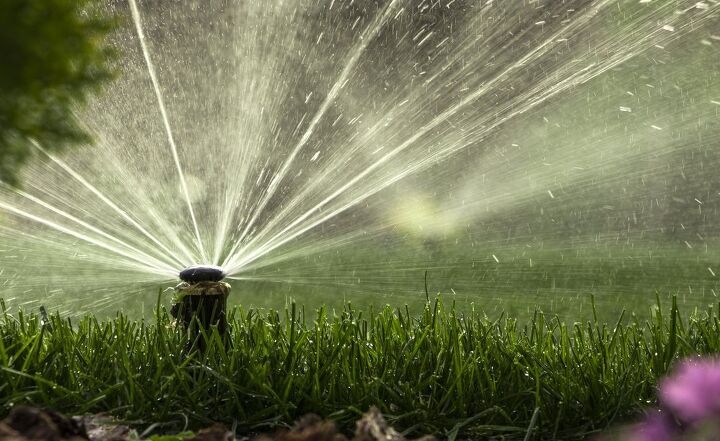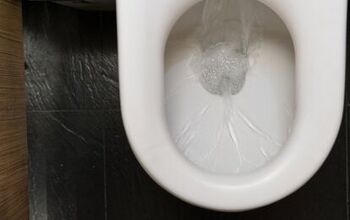Why Does My Sprinkler System Run Twice? (Find Out Now!)

A sprinkler system is a great tool in helping to keep your lawn hydrated and beautiful. Through this seemingly complicated system, there’s the convenience of having to just program it and forget it. However, a common issue is that the sprinkler system runs twice, but there is probably a simple solution.
The most common reason a sprinkler system runs twice is that someone has programmed it with multiple start times. To fix this, consult with your system’s owner’s manual to change these settings. If you cannot find your owner’s manual, try an online version or contact your brand’s customer service assistance.
Below are some causes and solutions to similar sprinkler system issues. As well as an overview of how irrigation systems work and the main components.
Do You Need to Hire a Sprinkler System Contractor?
Get free, zero-commitment quotes from pro contractors near you.

What Are The Main Reasons My Sprinkler System Runs Twice?
There are a couple of reasons why your sprinkler system keeps running when it’s off or unplugged. Either someone has opened the valves manually, or there is debris in the valve. There are some simple steps to resolve these issues.
If the valves have been opened manually, try doing this. You will need to locate your valve box(or boxes) and turn the solenoid(s) clockwise. The solenoid is on top of the valve and looks like a cylinder with two wires protruding from it.
There could be debris in the valve, causing the diaphragm to stay open. To fix this, you’ll need to disassemble the valve, rinse off all the parts with clean water, and reassemble. If this does not work or you cannot locate the valves, contact the contractor who installed your system.
Signs the Valve Solenoid Is Bad
The sprinkler valve solenoid is the part that controls the water pressure. Making sure this part is working properly is important, especially since they go bad quite often.
Some signs a sprinkler valve solenoid is bad could be never-ending water, which could mean the solenoid is stuck open. Water leaks, usually caused by high pressure from a broken solenoid, can cause stress on the sprinkler system. Low water pressure can be just as bad since uneven watering can leave your lawn with yellow patches of grass.
These issues don’t always mean the valve solenoid is bad. However, it is best to seek a professional opinion.
Mainly because the first thing they need to check is the electrical signals being sent to the solenoid. They can also check inside the valve for any debris or sand that they may need to flush out.
Why Won’t My Sprinklers Shut Off?
Go to the controller pad and set the timer to start within a few minutes. This tests the timer to make sure it is working properly. If the timer doesn’t start the system, try resetting the timer to your desired schedule.
If you have exhausted trying to shut the system off with the controller, you may have to go the manual route. There are some troubleshooting tips that can help you figure out why the sprinklers won’t shut off.
Turn off the main water supply with either the shut-off valve or the “off” switch on the controller. Expose the top of the valve, detach the diaphragm, turn the water back on, and flush the valve for fifteen seconds.
Check the diaphragm for any rips, tears, or damage. If you find any, you will need to replace the diaphragm.
Remove the solenoid from the top of the valve, clean the ports, reassemble, and turn the water supply back on. If issues begin to arise or persist, contact a professional sprinkler maintenance company.
Should I Let The Grass Be Watered Twice A Day?
While it is tempting just to let the sprinklers water your lawn twice a day, this is actually too much. Just like too little water can be bad for grass and plants, too much water can also cause problems.
You should set your sprinklers to run 30 to 35 minutes a time twice a week. You want your lawn to get about 1 inch of water a week so the roots can be properly saturated. However, too much water will lead to issues like weeds, fungal growth, and other problems.
If you are concerned your lawn isn’t getting enough water, you can try a little test. Leave a container out during regular sprinkler sessions. If the water measures ½ inch twice a week, the lawn is getting the right amount of water. However, if it is more or less, you will need to adjust your sprinkler settings.
What Are The Signs Of An Overwatered Lawn?
The first sign to look for is if the grass squishes hours after being watered. Other things to look for are weed growth (crabgrass, nutsedge, etc.), thatch, fungal growth (mushrooms), and yellowing grass. Runoff after a watering session is another sign to look for.
What overwatering does is suffocate the grass that stunts root growth, leaving your grass vulnerable to drought and disease. Soil is made up of air pockets to allow the roots access to oxygen as well as H20. However, overwatering fills these air pockets cutting off oxygen to the roots.
How Can I Repair An Overwatered Lawn?
To repair your overwatered lawn, you will need to work fast. First, figure out how much water your lawn is getting between your sprinkler system and rain. Look into lawn treatment for any yellow or brown grass, like aeration or dethatching, and fungal treatments for mushrooms.
Aeration lets the healthy grass take care of the compacted soil. Try a power core aerator and run it over your lawn. This will pull plugs of soil and open up areas to allow new root growth and let nutrients in.
How Do In-Ground Sprinkler Systems Work?
When it comes to troubleshooting problems with anything, it helps to have a basic understanding of how something works. So how does an in-ground sprinkler system work? There are four primary components of a sprinkler system and what role they play.
An in-ground sprinkler system comes in four basic sections. Main and zone lines, valve and heads, shut-off valve and backflow preventer, and controller.
Main And Zone Lines
The main and zone lines are the pipes that carry water through the system. Zone lines run from the main lines to distribute water to certain zones. This design makes it easier to identify any leaks because you can isolate certain zones versus having one primary line.
Valves And Heads
The sprinkler heads are usually the most recognizable parts since they are the nozzles that distribute the water. There are many types of sprinkler head designs, such as rotary, spray, and bubbler. The sprinkler head you choose depends on the size of your lawn and the type of irrigation system you have.
The valves are one of the more important parts of your irrigation system. Valves are the link between the controller and the sprinkler heads to turn the water off or on. In most automated systems, there are two valve types, the “gate” (also called “ball”) and the “shut-off” valve.
The gate valve is usually located right after the “tee.” This is where the sprinkler cuts off from the main source of water to your home.
Shut Off Valve And Backflow Preventer
If you need to turn off the system for maintenance or winterization, you’ll need to use the shut-off valve. You can typically find this valve in the basement of your home, but don’t confuse it with the valve to your home’s water supply. The shut-off valve can sometimes be found above ground, close to the source pipe that emerges from your home.
Because dirt can find its way into the irrigation pipes, the system needs a way to keep dirty water out. The backflow preventer protects against back-siphonage and back-pressure of contaminated water. Simply put, this device keeps dirty water from flowing into the water supply.
The Controller
The controller is the “brains” of your sprinkler system. From here, you can control what zones to turn on and off and the start times, and for how long. For larger properties, there can be multiple controllers with various start times for the different areas.
Older systems need to have this information imputed manually, so you may need to guess the amount of water necessary. In contrast, newer systems have sensors that can take the weather into account and will water accordingly. Some can even connect via the Cloud, allowing the user to change the settings from anywhere.
Do You Need to Hire a Sprinkler System Contractor?
Get free, zero-commitment quotes from pro contractors near you.

Related Questions
How do I stop grass from growing on my sprinklers?
Fast-growing grass or grass left unattended can begin to grow over your sprinkler heads. If this is a concern, there are some solutions. Herbicides, doughnut-shaped head guards, and plastic mulch cut to fit are some low-maintenance solutions that can help.
Does a sprinkler system save water?
Irrigation systems administer a certain amount of water to a specific area. Therefore, they can help save water and money. Compared to watering with just a hose, which can saturate the ground too quickly, leading to runoff and wasted water.
Related Guide

Stacy Randall is a wife, mother, and freelance writer from NOLA that has always had a love for DIY projects, home organization, and making spaces beautiful. Together with her husband, she has been spending the last several years lovingly renovating her grandparent's former home, making it their own and learning a lot about life along the way.
More by Stacy Randall



























